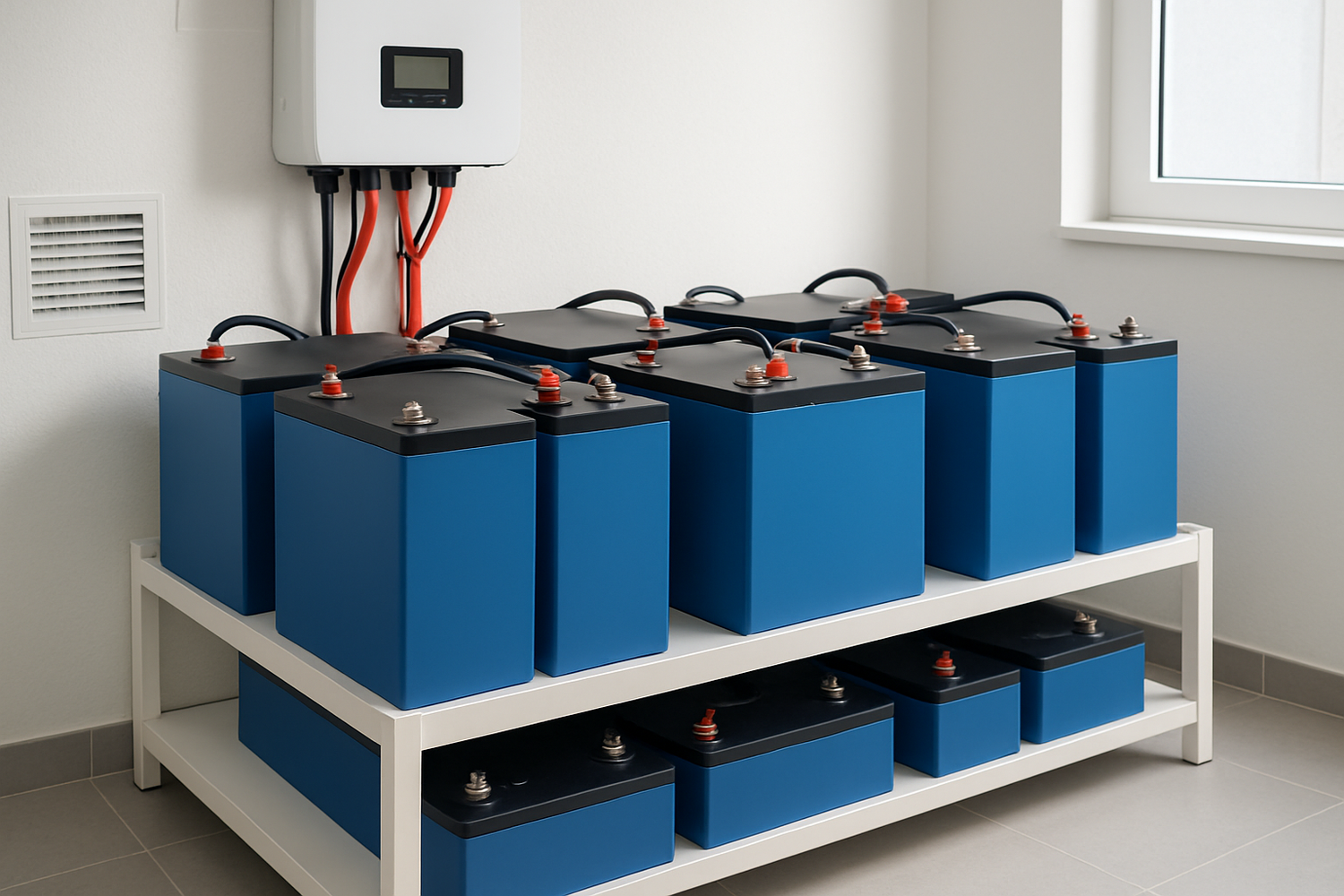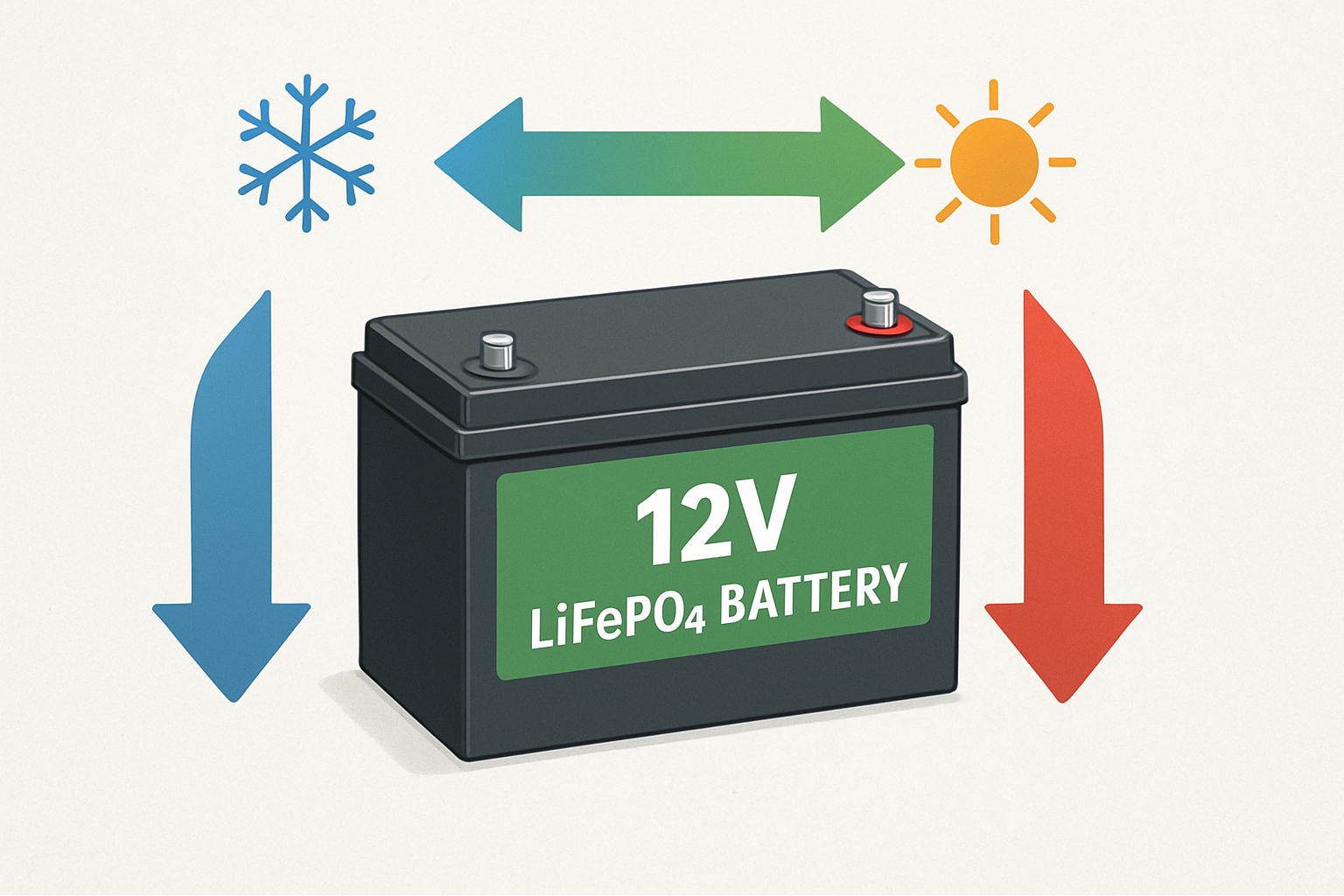Lithium Iron Phosphate (LiFePO4) batteries are a cornerstone of modern solar and energy storage systems, prized for their safety, efficiency, and long operational life. Investing in a LiFePO4 battery pack is a significant step towards energy independence. To ensure you get the maximum value and performance from this investment, adopting proper care and maintenance habits is crucial. Simple, consistent practices can dramatically extend the lifespan of your batteries, ensuring they deliver reliable power for many years.
1. Master the Art of Charging
Proper charging is the single most effective way to influence your battery’s health. Unlike older battery technologies, LiFePO4 batteries benefit from specific charging protocols that minimize stress on their internal chemistry.
Use a Dedicated LiFePO4 Charger
It's vital to use a charger specifically designed for LiFePO4 chemistry. These chargers use a Constant Current/Constant Voltage (CC/CV) algorithm tailored to the battery's needs. For a typical 12V LiFePO4 battery, the charging voltage should be set between 14.2V and 14.6V. Using a charger for lead-acid batteries can lead to undercharging or overcharging, both of which can cause irreversible damage.
Avoid Extreme States of Charge
LiFePO4 batteries are happiest when they operate in a partial state of charge. Constantly charging to 100% and discharging to 0% puts unnecessary strain on the battery cells. For daily use, it is beneficial to keep the state of charge between 20% and 80%. This practice can significantly increase the number of cycles your battery can deliver over its lifetime.
2. Control the Operating Environment
The ambient conditions where your battery operates play a significant role in its longevity. Both high heat and extreme cold can negatively impact performance and accelerate degradation.
Maintain an Optimal Temperature Range
LiFePO4 batteries have distinct temperature ranges for charging and discharging. The ideal charging temperature is between 0°C and 45°C (32°F to 113°F). Charging below freezing can cause lithium plating, which permanently damages the battery. The discharging range is broader, typically from -20°C to 60°C (-4°F to 140°F). Operating the battery in a consistently cool, stable environment around 25°C (77°F) is best for long-term health.
Keep It Clean and Dry
Physical maintenance is straightforward but important. Ensure your battery and its terminals are clean, dry, and free of corrosion. A clean surface helps dissipate heat more effectively. According to the U.S. Department of Energy's Operations & Maintenance Best Practices Guide, properly maintained equipment is safer and achieves its designed life expectancy. Periodically inspect connections to ensure they are tight, as loose connections can cause resistance and heat buildup.
3. Leverage a Smart Battery Management System (BMS)
A quality Battery Management System (BMS) is the brain of your battery pack. It's an electronic system that monitors and manages all the individual cells, ensuring they operate safely and efficiently.
Rely on Built-in Protections
The BMS provides critical protections against over-charging, over-discharging, over-current, and high temperatures. It acts as a fail-safe, automatically disconnecting the battery to prevent damaging conditions. This protection is fundamental to the safety and longevity of any LiFePO4 battery system.
Ensure Proper Cell Balancing
Cell balancing is one of the most important functions of a BMS. It ensures that all cells within the battery pack are maintained at an equal state of charge. Without balancing, some cells could be over-stressed during charging and discharging, leading to premature degradation and a reduction in the pack's overall capacity.
4. Understand Depth of Discharge (DoD)
Depth of Discharge refers to the percentage of the battery's capacity that has been used. It has a direct and inverse relationship with the battery's cycle life: the shallower the average discharge, the longer the battery will last.
Shallow Discharges Extend Cycle Life
A LiFePO4 battery can handle deep discharges of 80% or more, delivering thousands of cycles. However, you can dramatically increase its lifespan by using shallower discharge cycles. For example, a battery consistently discharged to only 50% DoD may deliver more than double the cycles of one regularly discharged to 90% DoD.
| Depth of Discharge (DoD) | Estimated Cycle Life |
|---|---|
| 100% | ~2,000 - 3,000 Cycles |
| 80% | ~3,000 - 5,000 Cycles |
| 50% | ~5,000 - 8,000+ Cycles |
Size Your System Appropriately
To facilitate shallower discharge cycles, it is wise to size your battery bank slightly larger than your minimum daily energy requirement. This prevents you from needing to drain the battery completely on a regular basis. For a comprehensive look at how system design affects battery use, the Ultimate Reference for Solar Storage Performance offers detailed insights into optimizing your entire setup for efficiency and longevity.
5. Follow Proper Long-Term Storage Procedures
If you need to store your battery for an extended period (more than three months), following a few simple rules will preserve its health.
Store at a Partial State of Charge
Never store a LiFePO4 battery fully charged or fully depleted. The ideal state of charge for long-term storage is between 50% and 70%. This minimizes stress on the cells and reduces capacity loss over time.
Maintain a Cool and Dry Environment
Store the battery in a cool, dry place, ideally between 15°C and 35°C (59°F to 95°F). Disconnect it from all chargers and loads to prevent any parasitic drain. For storage periods longer than six months, it's a good practice to check the voltage and give it a brief top-up charge if necessary to bring it back to the 50-70% range.
A Final Word on Battery Longevity
Extending the life of your LiFePO4 battery is not complicated. By implementing these professional tips—managing your charging habits, controlling the temperature, respecting the depth of discharge, relying on a quality BMS, and using proper storage techniques—you protect your energy investment. As organizations like the International Energy Agency (IEA) note, battery storage is critical for the global transition to clean energy. Proper care ensures your system remains a reliable and efficient part of that transition for its full operational life.
Frequently Asked Questions
Can I use a lead-acid battery charger on a LiFePO4 battery?
It is strongly discouraged. Lead-acid chargers have different voltage profiles and often include equalization or desulfation modes that can permanently damage LiFePO4 cells. Always use a charger specifically designed for LiFePO4 chemistry.
How often should I 'balance' my LiFePO4 battery?
You do not need to manually balance the battery. A quality Battery Management System (BMS) handles cell balancing automatically during each charge cycle. This ongoing process ensures the pack remains healthy and efficient.
What is the most damaging factor for a LiFePO4 battery's lifespan?
While several factors contribute to battery aging, consistent exposure to high temperatures (above 45°C or 113°F) and charging at sub-zero temperatures are two of the most destructive conditions. Regularly discharging the battery to 100% DoD also significantly shortens its lifespan.





Leave a comment
All comments are moderated before being published.
This site is protected by hCaptcha and the hCaptcha Privacy Policy and Terms of Service apply.